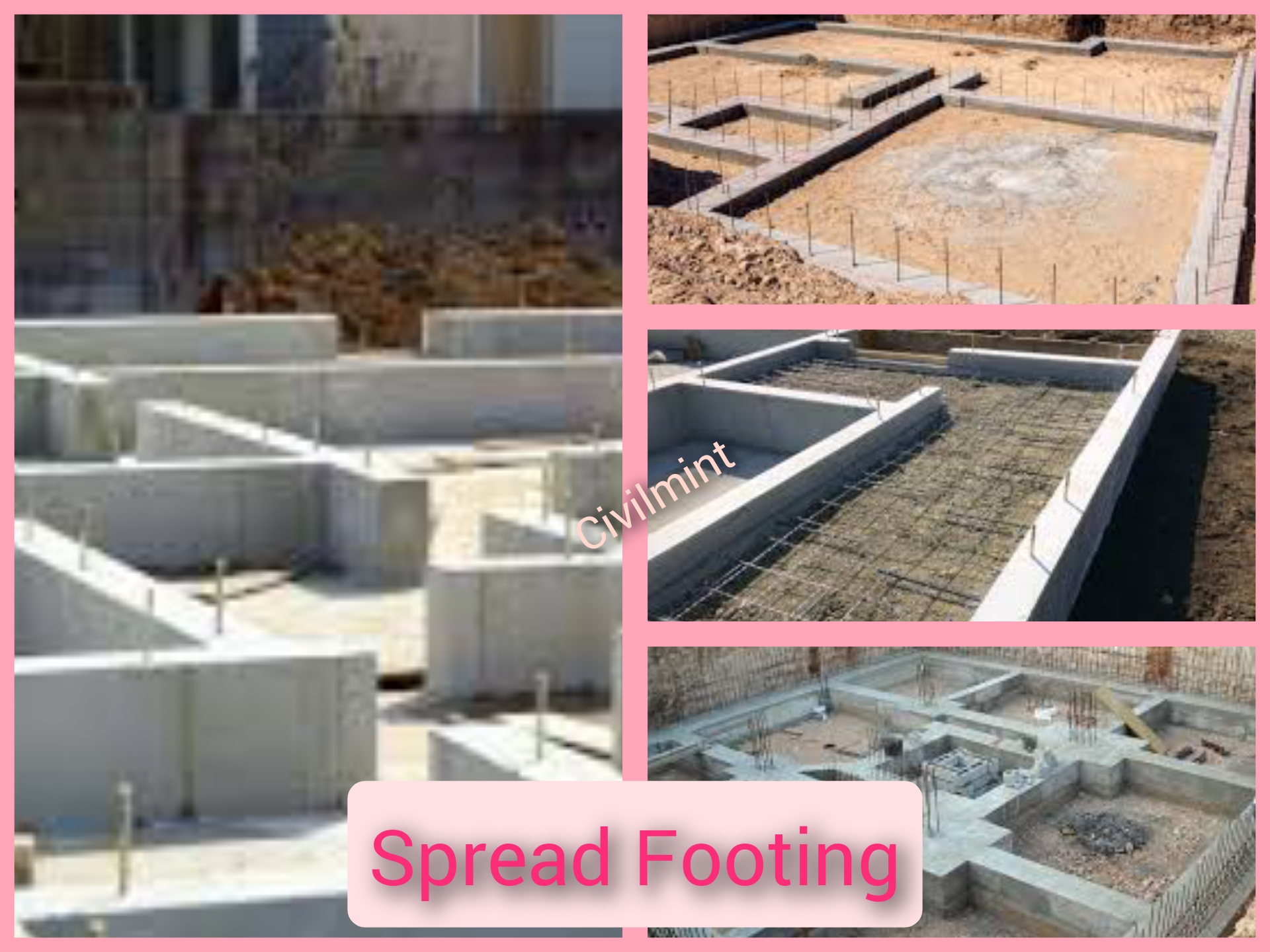Table of Contents
Definition Of Spread Footing
Spread footing is a type of foundation used to distribute the weight of a building or structure over a larger area of soil.
Explanation
Spread footings are designed to distribute the load from the superstructure over a larger area by making the base wider than the top.

This type of foundation is suitable for supporting walls and masonry columns and is constructed by digging trenches to the required depth.
Spread footings are typically most cost-effective for depths up to 3 meters. During construction, the soil is compacted well and a layer of plain concrete mix 1:4:8 is poured with a thickness of 175 to 200 mm. The stone-masonry footing is then constructed in courses, with each course projecting 60 to 75 mm from the top course and having a height of 175 to 200 mm.
For wall footings, the projections are provided in one direction, while for columns, they are provided in both directions. The bed concrete usually projects 150 mm from the lowest course of foundation masonry.
Software To Design Spread Footing
Designing spread footings involves using specialized software programs that incorporate advanced engineering techniques to analyze soil-structure interaction.
There are several software options available, including SAFE by Computers and Structures, Inc. (CSI), GEO5, RISAFoundation by RISA Technologies, spMats by StructurePoint, and ADAPT-PT/RC by ADAPT Corporation.
Each of these programs has unique features such as automatic load combinations, reinforcement detailing, and more, to help engineers accurately design and model spread footings.
It is important to note that while these software programs differ in their capabilities, they are all highly regarded in the engineering community for their accuracy and efficiency in spread footing design.
Applications of Spread Footings
Spread footings are commonly used for the following purposes:
- Supporting a foundation or a group of piers under a building.
- Ensuring stability.
- Reducing uneven settlement of the structure.
- Transmitting loads from the superstructure to the ground.
Benefits of Spread Footings
Spread footings offer several advantages, such as:
- Minimizing cracking caused by settlement.
- Balancing the soil around the structure’s base.
- Facilitating the construction of basements.
- Providing continuous contact with the entire foundation, which reduces the risk of foundation failure.
- Reducing construction costs, design expenses, and quality control expenditures.
Some Limitations of Spread Footings
Despite their benefits, spread footings have some disadvantages, including:
- Being suitable for certain soil types only and not applicable to all soil conditions.
- Regularly being subjected to torsion, moment, and pullout.
- Settlement being a significant issue for this type of foundation.
